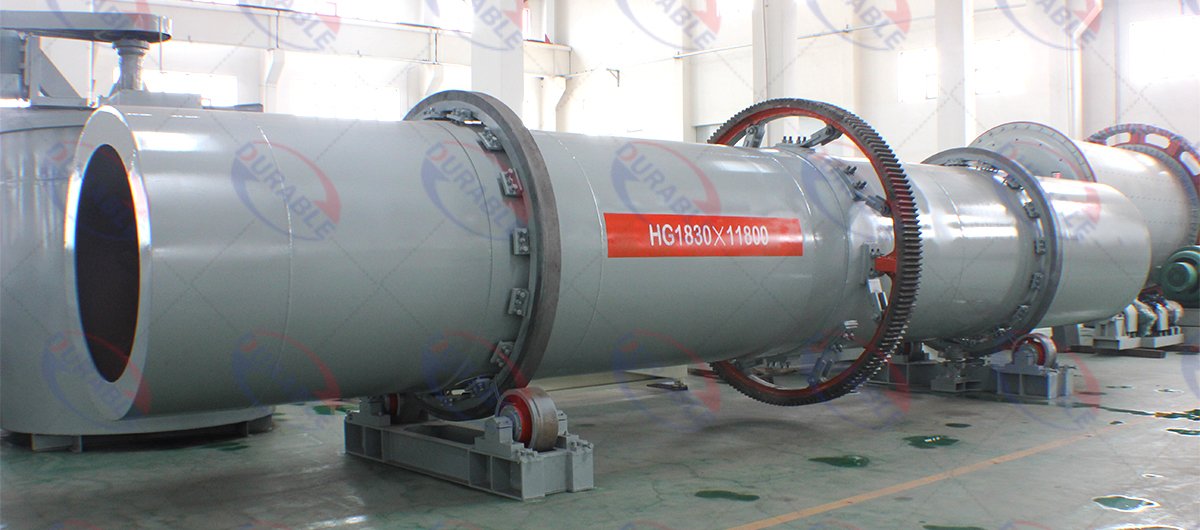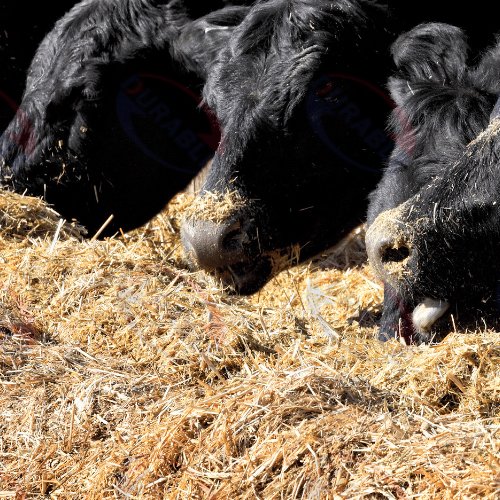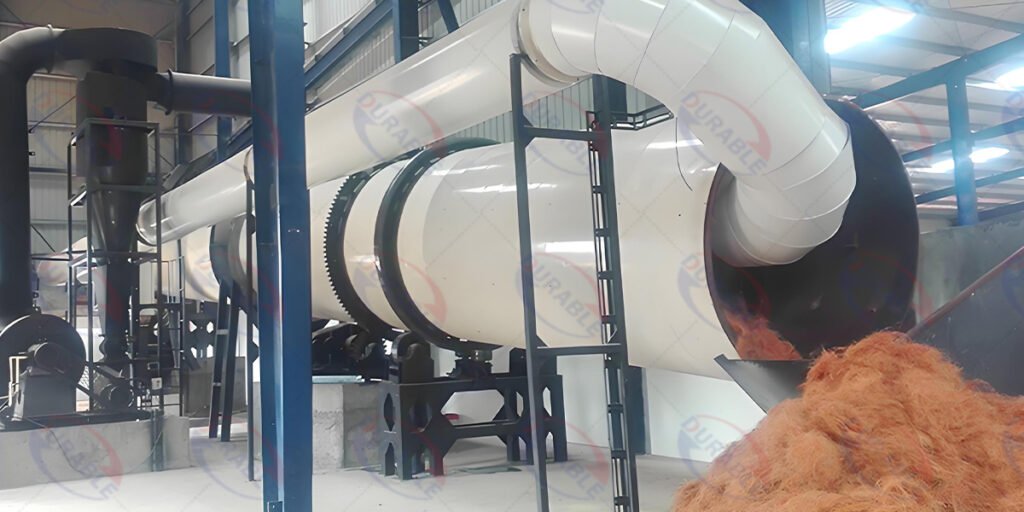How to Select a Palm Slag Dryer for Max Efficiency & ROI
In my years at Durable Machine, I have seen many companies invest in the promising business of turning wet palm waste into a valuable resource. But I have also seen some make a critical mistake: choosing the wrong palm slag dryer. A dryer is not a simple purchase; it is the core of your operation. Palm slag is a difficult material—it is wet, fibrous, and sticky. Choosing the right machine is the difference between a profitable business and a constant source of problems.

Table of Contents
- How many tons of wet palm slag will you process daily?
- Which dryer technology is best for sticky palm slag?
- What fuel will you use? How will this affect your costs?
- Is the final product for fuel or feed?
- Have you checked the supplier’s experience and service?
- How do you estimate the investment return (ROI)?
- FAQs
- About Durable
How many tons of wet palm slag will you process daily?
Yes, this is always the first and most important question. Your required processing capacity is the primary factor that determines the physical size, motor power, and overall cost of your palm slag dryer. Do not estimate this number. You need to calculate your daily output of wet slag accurately.

You need to think in terms of “tons per hour” (TPH) of wet material input. This number will dictate the diameter and length of the dryer drum. For example, a dryer designed for 5 TPH will be significantly smaller and less expensive than one designed for 20 TPH. A common mistake is to buy a dryer that is too small to handle peak production. I always advise my clients to plan for their maximum output, not just their average. This ensures your operation will not become bottlenecked during the high season, which is when you have the greatest opportunity for profit.
Which dryer technology is best for sticky palm slag?
Palm slag is not like sand or minerals. Its high moisture and fibrous, sticky nature can easily clog a poorly designed dryer. For this material, the rotary drum dryer is the industry standard. However, you have a critical choice between two main types: single-pass and triple-pass.
A single-pass dryer is a long, single drum. It is simpler and can handle very large, clumpy material. However, it is less energy-efficient and has a very large footprint. A triple-pass dryer, which we specialize in at Durable, is a more advanced design. It consists of three concentric drums, so the material travels three times the length of the machine within a compact body. This design is far more thermally efficient, saving you significant money on fuel. For most modern palm waste processing, a triple-pass dryer with a specialized internal structure to prevent sticking is the superior long-term investment.


| Dryer Technology | Single-Pass Dryer | Triple-Pass Dryer | What This Means For You |
|---|---|---|---|
| Structure | One long, large drum | Three concentric drums | Triple-pass saves a lot of factory floor space. |
| Energy Efficiency | Lower | Very High (up to 30% more efficient) | This directly translates to lower daily fuel costs. |
| Footprint | Very large and long | Compact and shorter | You need less land for a triple-pass installation. |
| Initial Cost | Lower | Higher | The fuel savings of a triple-pass dryer often pay back the extra cost in 1-2 years. |
| Best For | Extremely clumpy, un-shredded material | Shredded fiber, PKS, uniform material | Proper pre-treatment makes the triple-pass dryer the most profitable choice. |
What fuel will you use? How will this affect your costs?
The dryer itself is just a steel box; the real, ongoing cost of your operation is the fuel that heats it. Your choice of dryer heat source is one of the most critical financial decisions you will make. You must choose a fuel that is cheap, reliable, and abundant in your local area.
The ideal scenario, which we help many of our clients achieve, is to use your own palm waste as fuel. A custom-built biomass furnace can burn palm kernel shells (PKS), off-spec fiber, or empty fruit bunches (EFB). This creates a closed-loop system where your waste product powers the processing of other waste, dramatically lowering your operating costs. Other options like natural gas or diesel are easier to control but can be very expensive and will eat into your profits. The investment in a good biomass furnace system will pay for itself very quickly through fuel savings.
Is the final product for fuel or feed?
You must clearly define the end use for your dried palm slag because it determines the required final moisture content. This target moisture level directly impacts the dryer’s configuration, the time the material spends in the drum, and your overall energy consumption.


- For Biofuel: If you are producing biomass pellets or briquettes, or selling the dried fiber as boiler fuel, a final moisture content of 10-15% is ideal. This level provides excellent calorific value and ensures efficient combustion without wasting energy on over-drying.
- For Animal Feed: If you are drying palm kernel cake (PKC) to produce animal feed, you need a lower final moisture content, typically 8-12%. This is crucial to prevent the growth of mold and bacteria during storage and transportation, ensuring a safe and stable feed product.
Telling your manufacturer the exact end use and required final moisture is critical for them to design and calibrate the feed drying system correctly.
Have you checked the supplier’s experience and service?
This may be the most important question of all. A cheap palm slag dryer from an inexperienced workshop can be the most expensive purchase you ever make due to constant downtime and poor performance. You are not just buying a machine; you are investing in a long-term partnership with the dryer manufacturer.

Before you make a decision, you must verify their experience:
- Ask for Case Studies: Ask them directly, “How many drying lines for palm slag have you successfully installed?” Request photos, videos, and contact information for reference sites.
- Verify Engineering Capability: Do they understand the specific challenges of palm fiber drying? Do they use high-quality, heat-resistant steel and design the internal lifters to prevent material from sticking?
- Confirm After-Sales Support: What happens when you need a spare part or technical assistance? Do they have engineers who can support you remotely or travel to your site? A reliable supplier stands behind their product for its entire lifecycle.
How do you estimate the investment return (ROI)?
Finally, you need to treat this as a business investment. A rough estimate of your Return on Investment (ROI) will help you justify the project. You need to look at both sides of the equation: your total investment and your potential income or savings.
Your Total Investment Includes:
- The cost of the palm slag dryer and heat source.
- The cost of auxiliary equipment (conveyors, shredder, packing machine).
- Shipping, installation, and commissioning fees.
Your Annual Revenue & Savings Include: - Revenue from selling the dried product (e.g., selling dried fiber to a power plant).
- Savings by avoiding fees for palm waste treatment and disposal.
- Savings by using your own waste as fuel instead of buying diesel or gas.
By comparing your annual net profit (Revenue – Operating Costs) to your total initial investment, you can estimate how many years it will take to pay back the equipment. A well-planned project with the right equipment often has an ROI of just 2-3 years.
FAQs
Q1: What is the biggest challenge when drying palm slag?
A: The biggest challenge is its high initial moisture content (often 50-60%) combined with its fibrous and sticky nature. This requires a dryer with a specialized internal flight design that can effectively lift and shower the material without letting it clump and stick to the drum walls.
Q2: Can I really use my own palm waste as a fuel source?
A: Yes, and it is the most cost-effective method. Palm kernel shells (PKS) and dry mesocarp fiber are excellent biomass fuels. A properly designed hot air furnace can burn this material efficiently to generate the heat needed for the drying process, significantly reducing your operating costs.
Q3: How much does a palm slag dryer cost?
A: The dryer cost varies widely based on capacity, configuration, and the materials used in construction. A small, simple system might start around $50,000, while a large, automated production line can be over $300,000. It is crucial to focus on long-term value and operational savings, not just the initial purchase price.
About Durable
We are Durable Machine, a manufacturer of industrial drying and mineral processing equipment since 2001. We specialize in providing complete, customized B2B solutions for clients around the world. We offer a comprehensive product line, including our highly efficient biomass dryer systems designed specifically for challenging materials like palm slag. With our factory-direct sales model and full-service support, we provide high-quality, cost-effective machinery to help your business succeed. Our equipment has been exported to over 120 countries, empowering projects worldwide.
 Durable Machinery
Durable Machinery